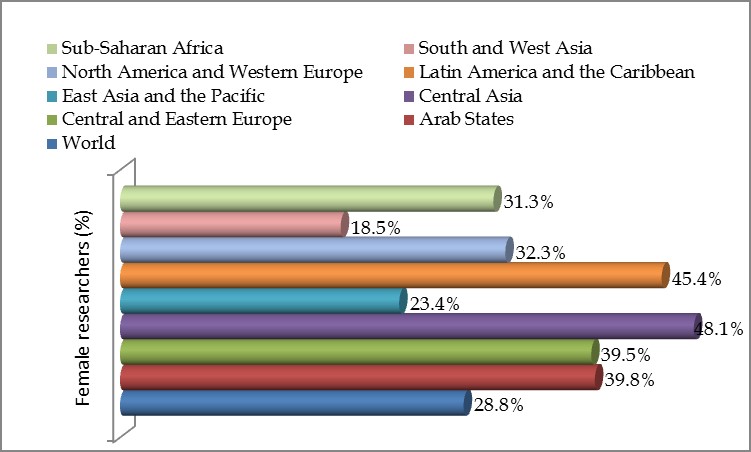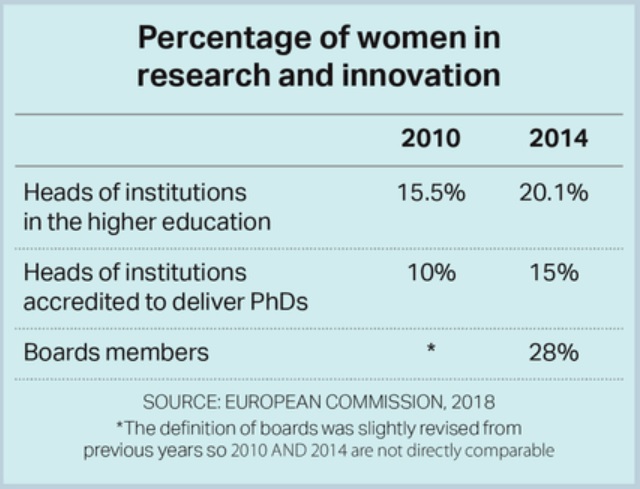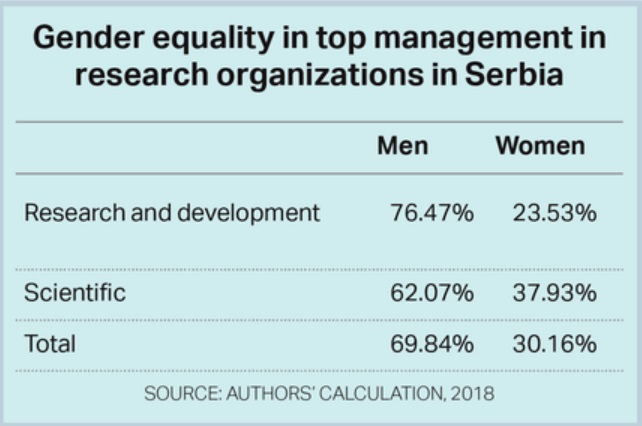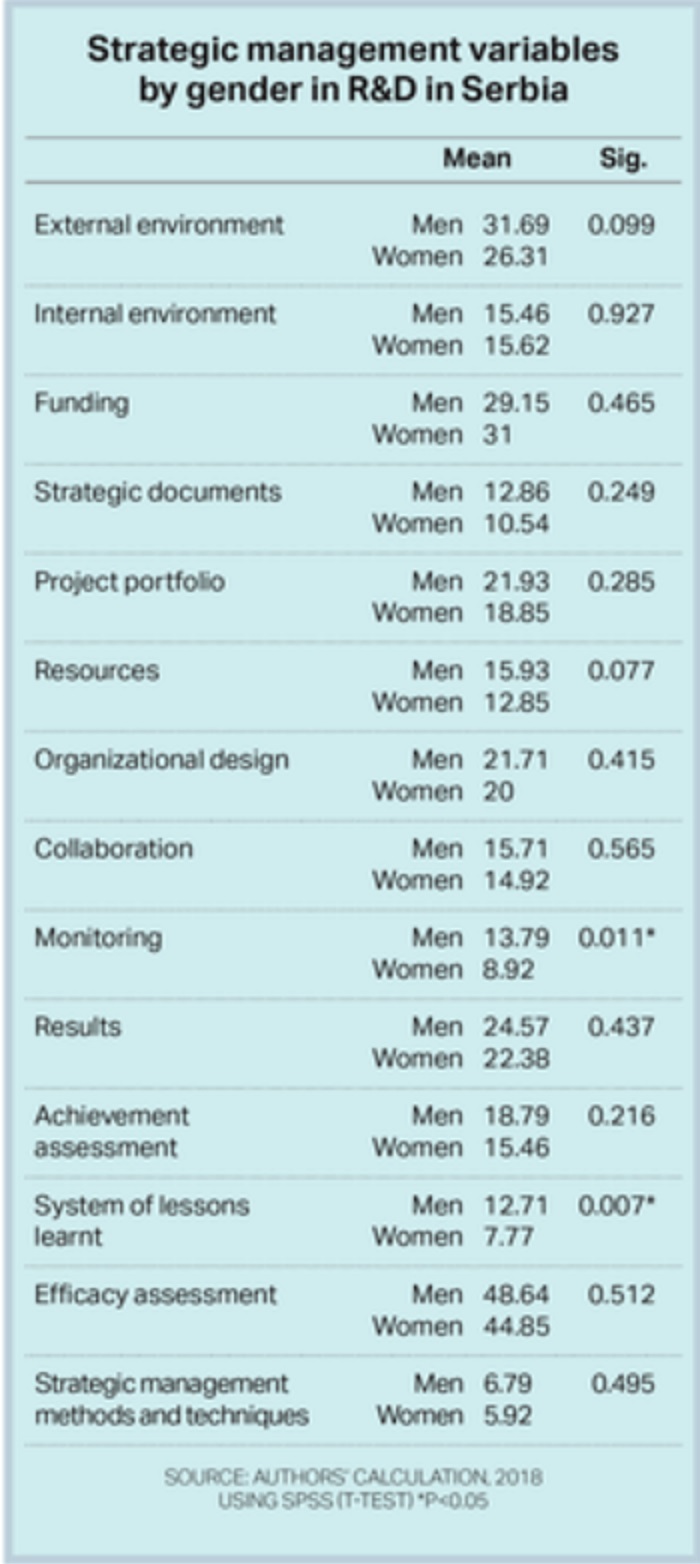Increasing level of R&D activities, as well as their costs, indicate the need to establish an efficient system of strategic management in R&D organizations. This is important, not only for improving R&D sector performance, but also for improving the performance of the national economy as a whole. R&D projects are undoubtedly of great importance for the innovation development, social development, development of the national economy and sustainable development in general.
Despite the fact that women participate more in the R&D sector, some of them are still underappreciated regarding the professional status, especially at the higher levels of a scientific career. Gender trends in R&D sector vary widely from region to region and even country to country. Despite the increasing tendency of women participation in R&D personal, in the last ten years, the gender gap is still quite obvious.

Credit: UNESCO, 2018
A strategic approach to the management of R&D projects is a comprehensive, multidimensional and balanced set of diverse elements in which the gender aspect should be an integral part. Some studies have shown that by reducing the gender gap in science, technology, engineering and mathematics (STEM) could lead to increasing of the European Union (EU) GDP per capita of 2.2 to 3.0 percent. Gender mainstream concept provides a strategic approach to identifying gender gaps predominantly expressed through the lack of an equal approach to the development of a scientific career, decision-making, resource control and results, and ultimately benefiting from scientific work. Understanding different gaps will facilitate the identification of appropriate measures for their elimination. Despite the Gender Equality Index published by the European Institute for Gender Equality (EIGE)—which indicates that the biggest shift for gender equality in the past 10 years has been made in decision-making area— women’s participation in this process is still deficient at all levels, regardless of the sector. Gender mainstreaming and larger inclusion of women in R&D activities have been recognized as an important issue at the European level and gender equality should be in the line with the European research policy. One of three important aims defined in the European Research area (ERA) is gender balance in decision making on leading positions. Proportion of women at top management position in academic and scientific research sector has shown slowly increasing tendency at EU average level.
This aspect is in the line with organizational change at all decision making aspects— from project teams to advisory boards and top management positions. In case of Serbia, in research organizations accredited by national accreditation body, there are 30 percent women top managers. The women as top managers are more present in research organizations that perform only scientific research.


Implementation of the gender mainstream strategy for R&D projects implies incorporation of the concept for equal participation of women and men in all phases of the strategic management of R&D projects within the organization: planning, implementation and evaluation. Within the research conducted in research organizations in Serbia in 2018, the strategic management phases are further described by the following variables: external environment, internal environment, funding, strategic documents, project portfolio, resources, organizational design, collaboration, monitoring, results, achievement assessment, system of lessons learnt, efficacy assessment, strategic management methods and techniques. With the aim of deeper analysis of the R&D project managers’ opinion regarding the selected strategic management variables, the t-test was applied. The R&D project managers have given their assessment regarding to all variables of strategic management. Statistical analysis shows their insight on gender balance regarding almost all elements relevant to strategic management in R&D organizations. The gender gap only occurs in terms of monitoring the realization of the projects as well as their use in the future. A statistically significant difference exists only in variables depicting monitoring and the system of lessons learnt. Such results could indicate that women engaged a higher degree of caution, analysis and monitoring while making strategic decisions, which should certainly be considered as an advantage. However, significant conclusions should be made only after a deeper analysis.

In practice, the weak connection between the strategic objectives and the processes of implementation and monitoring has proven to be one of the main causes of the organizations’ strategic failure. The system of lessons learnt is the process of developing a base of lessons learned from realized and/or ongoing projects. In this way it becomes possible to systematize and retain knowledge from realized projects, which is highly important regarding R&D projects.
Regarding the strategic management variables in R&D organizations, the opinion of project managers differed in various categories of strategic management. The main goal of the strategic management in R&D organizations is the efficient management of R&D processes in order to increase the use of R&D results and to reduce the costs, as well as to upgrade the knowledge base. Bearing in the mind the peculiarities of R&D activities, gender mainstream as a part of the management strategy brings lots of benefits to R&D organizations, not only for the R&D management at the project/organization level, but also for decision-makers at the national level through maximizing the quality of policy coordination and budget planning. It leads to efficient allocation of available resources.
The results of the research conducted in Serbia should not be observed only at the local level, but as a foundation, a global initiative for further research, that should raise awareness of the importance of gender equality in R&D on all positions, thus contributing to the well-being and welfare of the society as a whole.




